কবির হোসেন ঢাকার কেরানীগঞ্জে জন্মগ্রহণ ও বেড়ে উঠেছেন। তিনি এসএসসি সম্পন্ন করেন কেরানীগঞ্জের একটি স্কুল থেকে এবং এইচএসসি করেন পুরান ঢাকার সরকারি শহীদ সোহরাওয়ার্দী কলেজ থেকে। পরবর্তীতে কম্পিউটার প্রকৌশলে আগ্রহের কারণে তিনি কোরিয়ান গভর্নমেন্ট স্কলারশিপ (KGSP) প্রোগ্রামে অংশ নিয়ে দক্ষিণ কোরিয়ার একটি বিশ্ববিদ্যালয়ে স্নাতক ডিগ্রি অর্জন করেন ২০১১ সালে। ব্যাচেলর পর্যায়ে তিনি “ইন্টেলিজেন্ট ইমেজ মিডিয়া অ্যান্ড ইন্টারফেসিং” ল্যাবে কাজ করেন, যেখানে তাঁর গবেষণার মূল বিষয় ছিল ইমেজ প্রসেসিং ও মানব অবজেক্ট ট্র্যাকিং।
২০১৩ সালে তিনি মাস্টার্স সম্পন্ন করেন একই প্রতিষ্ঠানে এবং পরবর্তীতে স্যামসাং বাংলাদেশের সফটওয়্যার বিভাগে সিনিয়র সফটওয়্যার ইঞ্জিনিয়ার হিসেবে যোগ দেন। দুই বছর পর, ২০১৫ সালে, তিনি ডেনমার্কের Technical University of Denmark (DTU)-এ পিএইচডি গবেষণা শুরু করেন। তাঁর গবেষণার ক্ষেত্র মূলত ভিডিও কোয়ালিটি এস্টিমেশন, ড্রোন ভিডিও বিশ্লেষণ, ইনফ্রারেড ইমেজিং এবং মেশিন লার্নিং-ভিত্তিক ভিডিও প্রসেসিং প্রযুক্তি। বর্তমানে তিনি ডেনমার্কে পরিবারসহ বসবাস করছেন এবং গবেষণার পাশাপাশি প্রযুক্তিনির্ভর নতুন নতুন উদ্ভাবন নিয়ে কাজ করছেন।
💬 প্রশ্নোত্তর পর্ব:
প্রশ্ন: বিজ্ঞানী.অর্গ-এর পক্ষ থেকে শুভেচ্ছা গ্রহণ করুন। প্রথমেই আপনার সম্বন্ধে আমাদের একটু বলুন।
উত্তর: ধন্যবাদ। আমার বাড়ি ঢাকার কেরানীগঞ্জে, সেখানেই বেড়ে উঠেছি। বর্তমানে আমি ডেনমার্কের টেকনিক্যাল ইউনিভার্সিটি অব ডেনমার্ক (DTU)-এ পিএইচডি করছি। এসএসসি করেছি কেরানীগঞ্জের একটি স্কুলে এবং এইচএসসি পুরান ঢাকার শহীদ সোহরাওয়ার্দী কলেজ থেকে। এরপর কোরিয়ান গভর্নমেন্ট স্কলারশিপে (KGSP) দক্ষিণ কোরিয়ায় ব্যাচেলর সম্পন্ন করি ২০১১ সালে। সেখানেই ইমেজ প্রসেসিং ও হিউম্যান ট্র্যাকিং নিয়ে কাজ করি এবং পরবর্তীতে মাস্টার্স সম্পন্ন করি ২০১৩ সালে। এরপর স্যামসাং বাংলাদেশের সিনিয়র সফটওয়্যার ইঞ্জিনিয়ার হিসেবে কাজ করেছি, এবং ২০১৫ সালে পিএইচডির জন্য ডেনমার্কে আসি।
প্রশ্ন: আপনি বর্তমানে ড্রোনের ভিডিওর গুণগত মান নিয়ে কাজ করছেন। এটি সম্পর্কে একটু বিস্তারিত বলুন।
উত্তর: বর্তমানে ড্রোন প্রযুক্তি নানা ক্ষেত্রে ব্যবহৃত হচ্ছে—চলচ্চিত্র নির্মাণ, নিরাপত্তা পর্যবেক্ষণ, বন্যপ্রাণী ট্র্যাকিং, সোলার প্যানেলের ত্রুটি শনাক্তকরণ, এমনকি ভূগর্ভস্থ গ্যাস পাইপলাইনে ফাটল শনাক্ত করতেও। এসব কাজ প্রচলিত উপায়ে করা ব্যয়বহুল ও সময়সাপেক্ষ। ড্রোন প্রযুক্তি ব্যবহারে কাজগুলো দ্রুত, সাশ্রয়ী ও নির্ভুলভাবে সম্পন্ন করা যায়, তাই এ নিয়ে ব্যাপক গবেষণা হচ্ছে।
প্রশ্ন: ড্রোন ভিডিওর গুণগত মান কেন গুরুত্বপূর্ণ, এবং আপনি কীভাবে কাজ করছেন তা উন্নয়নে?
উত্তর: ড্রোনের প্রায় প্রতিটি অ্যাপ্লিকেশনে ভিডিও প্রধান উপাদান। ভিডিওর গুণমান ভালো না হলে পরবর্তী বিশ্লেষণ কার্যকর হয় না। আমাদের গবেষণায় আমরা ইনফ্রারেড ক্যামেরা ব্যবহার করে গ্যাস পাইপলাইনে ফাটল শনাক্তকরণের চেষ্টা করছি। ইনফ্রারেড ভিডিও তাপমাত্রার তারতম্য শনাক্ত করতে পারে, যা ফাটল নির্দেশ করতে সাহায্য করে।
আমার দায়িত্ব হলো ভিডিওর গুণমান নির্ধারণ করা। ড্রোনের কম্পিউটেশনাল ক্ষমতা সীমিত, ফলে ভিডিও সবসময় উচ্চমানের পাঠানো সম্ভব হয় না। আমি এমন একটি মেশিন লার্নিং–ভিত্তিক অ্যালগোরিদম তৈরি করছি, যা রিয়েল-টাইমে ভিডিওর গুণমান বিশ্লেষণ করে অপারেটরকে জানাবে ভিডিওর মান কেমন। এর ফলে প্রয়োজনে অপারেটর সেটিং পরিবর্তন করতে পারবেন।
প্রশ্ন: ভিডিও কোডিং বলতে কী বোঝায়? বর্তমানে এ ক্ষেত্রে কী কী প্রযুক্তি ব্যবহৃত হচ্ছে?
উত্তর: ভিডিও কোডিং হলো ডাটার আকার কমিয়ে তার ভিজ্যুয়াল গুণমান প্রায় অপরিবর্তিত রাখা। একটি ভিডিও অসংখ্য ফ্রেম বা ইমেজের সমষ্টি। প্রতিটি ফ্রেমে প্রচুর পিক্সেল থাকে, এবং সেগুলোর বিট সংখ্যা বিশাল। তাই ‘র’ ভিডিও ডাটা সংরক্ষণ বা প্রেরণ করা প্রায় অসম্ভব। এজন্য ভিডিও কোডিং প্রযুক্তি ব্যবহৃত হয়—যেমন JPEG, MPEG-4, H.264, H.265 ইত্যাদি। এসব প্রযুক্তির মাধ্যমে ভিডিও কমপ্রেস করা হয় যাতে ব্যান্ডউইথ কম লাগে, তবে গুণমানের ক্ষতি কম হয়।
প্রশ্ন: মেশিন লার্নিং কী এবং এটি কীভাবে ব্যবহৃত হচ্ছে?
উত্তর: সংক্ষেপে বলতে গেলে, মেশিন লার্নিং হল এমন একটি পদ্ধতি যেখানে সিস্টেমকে ডাটার প্যাটার্ন শিখিয়ে ভবিষ্যতের অজানা ডাটা থেকে আউটপুট অনুমান করতে শেখানো হয়। এটি বর্তমানে প্রায় সব ক্ষেত্রেই ব্যবহৃত হচ্ছে—প্যাটার্ন রিকগনিশন, রোগ নির্ণয়, অবজেক্ট ডিটেকশন থেকে শুরু করে কৃত্রিম বুদ্ধিমত্তা তৈরিতেও।
প্রশ্ন: ভবিষ্যতে আপনি কী নিয়ে কাজ করতে চান?
উত্তর: আমি যেহেতু ভিডিও কোডিং, মেশিন লার্নিং ও কোয়ালিটি এস্টিমেশনের ওপর কাজ করছি, ভবিষ্যতেও এই ক্ষেত্রগুলোর নতুন সমস্যাগুলো নিয়ে গবেষণা করতে চাই।
প্রশ্ন: গবেষণার পাশাপাশি আপনার শখ কী?
উত্তর: আমি বই পড়া, ভ্রমণ করা এবং পরিবারের সঙ্গে সময় কাটানো ভালোবাসি। বিশেষ করে আমার ছোট ছেলের সঙ্গে সময় কাটাতে সবচেয়ে বেশি ভালো লাগে।
প্রশ্ন: তরুণ শিক্ষার্থীরা যারা বিজ্ঞানে কাজ করতে চায়, তাদের জন্য আপনার কী পরামর্শ?
উত্তর: আমি উপদেশ দিতে চাই না, তবে বিশ্বাস করি—যে কাজকে ভালোবাসা যায়, তাতে নিষ্ঠা দিলে যেকোনো লক্ষ্য অর্জন করা সম্ভব।
ড্রোন ভিডিও বিশ্লেষণ ও কোয়ালিটি এস্টিমেশনে কবির হোসেনের গবেষণা ভবিষ্যতের প্রযুক্তিকে আরও নির্ভরযোগ্য ও বাস্তবভিত্তিক করে তুলবে। তাঁর গবেষণা প্রমাণ করে, সীমিত সম্পদের মধ্যেও উদ্ভাবনী চিন্তা দিয়ে বৈজ্ঞানিক সমস্যার সমাধান করা সম্ভব।
বিজ্ঞানী.অর্গ টিম কবির হোসেনের নিরলস গবেষণা ও সাফল্যের জন্য শুভকামনা জানাচ্ছে। তাঁর কাজ বাংলাদেশের তরুণ বিজ্ঞানীদের জন্য অনুপ্রেরণার উৎস হয়ে থাকুক—এই প্রত্যাশা।
Enhancing Drone Video Quality — An Interview with Kabir Hossain
Kabir Hossain was born and raised in Keraniganj, Dhaka. He completed his SSC from a local school in Keraniganj and HSC from Government Shaheed Suhrawardy College in Old Dhaka. His interest in computer engineering led him to pursue his undergraduate degree under the Korean Government Scholarship Program (KGSP) in South Korea, where he graduated in 2011. During his bachelor’s studies, he worked at the Intelligent Image Media and Interfacing Laboratory, focusing on image processing and human object tracking.
He completed his master’s degree in 2013 and later joined Samsung Bangladesh as a Senior Software Engineer. In 2015, he began his PhD at the Technical University of Denmark (DTU). His research primarily focuses on video quality estimation, drone video analysis, infrared imaging, and machine learning-based video processing. He currently lives in Denmark with his family and continues his work in computational imaging and intelligent vision systems.
💬 Interview Section:
Question: Welcome from biggani.org, and thank you for joining us. Could you tell us a bit about yourself first?
Answer: Thank you. I’m from Keraniganj, Dhaka, where I grew up. Currently, I’m pursuing my PhD at the Technical University of Denmark (DTU). I completed my SSC in Keraniganj, my HSC at Shaheed Suhrawardy College, and later received the Korean Government Scholarship (KGSP) for undergraduate study in South Korea. I graduated in 2011, worked on image processing and human tracking, completed my master’s in 2013, worked for Samsung Bangladesh, and finally came to Denmark in 2015 for my PhD.
Question: You are working on improving drone video quality. Can you tell us more about this research?
Answer: Drone technology has become very popular because of its wide applications — from movie shooting, security monitoring, wildlife tracking, and detecting solar panel defects to identifying underground gas pipeline leaks. Doing these tasks manually or by helicopter is costly and time-consuming. Drones make them faster, cheaper, and more efficient, which is why research in this area is expanding rapidly.
Question: Why is video quality so important for drones, and how are you working to improve it?
Answer: Every drone application depends heavily on video. If the video quality is poor, subsequent processing — such as defect detection or object tracking — becomes unreliable. In our project, we use infrared cameras mounted on drones to detect gas leaks underground. The infrared video captures temperature variations, which help us locate cracks.
My specific responsibility is to analyze and estimate the video quality. Since drones have limited computational power, it’s not always possible to transmit high-quality video. I am developing a machine learning–based algorithm that can evaluate the quality of a drone’s video in real time and inform the operator. This allows the operator to adjust drone settings immediately if the quality drops.
Question: What exactly is video coding, and which technologies are used today?
Answer: Before explaining what video coding is, let me explain why it’s important. A video consists of many image frames — usually 25 per second — and each image contains millions of pixels, each represented by multiple bits. So, one second of raw video requires enormous storage and bandwidth. That’s why we use video coding, which compresses the data while maintaining visual quality.
Common coding standards include JPEG, MPEG-4, H.264, and H.265. JPEG is used for images, MP3 for audio, and MPEG or H.264 for video formats like MP4. Without these compression technologies, streaming platforms like YouTube or Facebook would be impossible to run efficiently.
Question: Machine learning is a buzzword today. Could you explain it briefly and its applications?
Answer: In simple terms, machine learning is about teaching a system to learn data patterns so that it can make predictions or classifications on new, unseen data. It’s used in almost every field — from pattern recognition and object detection to medical diagnostics and artificial intelligence development.
Question: What do you plan to work on in the future?
Answer: Since my research lies in video coding, machine learning, and quality estimation, I intend to continue exploring new and challenging problems within these domains.
Question: What are your hobbies outside of research?
Answer: I enjoy reading books, traveling, and spending quality time with my family. I especially love playing with my young son whenever I have free time.
Question: What advice would you give to young students who want to pursue science?
Answer: I wouldn’t call it advice, but I truly believe that if you love what you do and stay passionate about it, you can achieve any goal you set.
Kabir Hossain’s work on drone video analysis and quality estimation reflects how innovative research can make technology more practical and efficient. His dedication to solving real-world problems with machine learning and computer vision sets an inspiring example for young scientists.
The biggani.org team wishes him continued success and hopes his research journey inspires the next generation of Bangladeshi scientists.

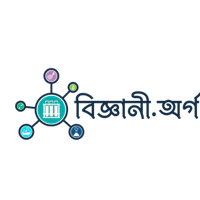


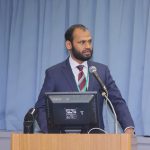


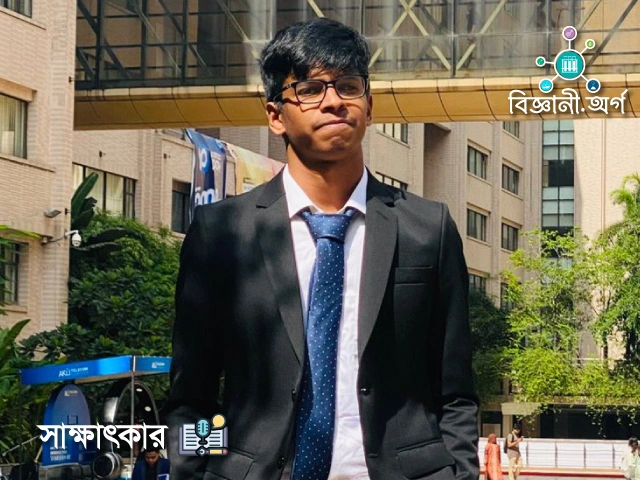
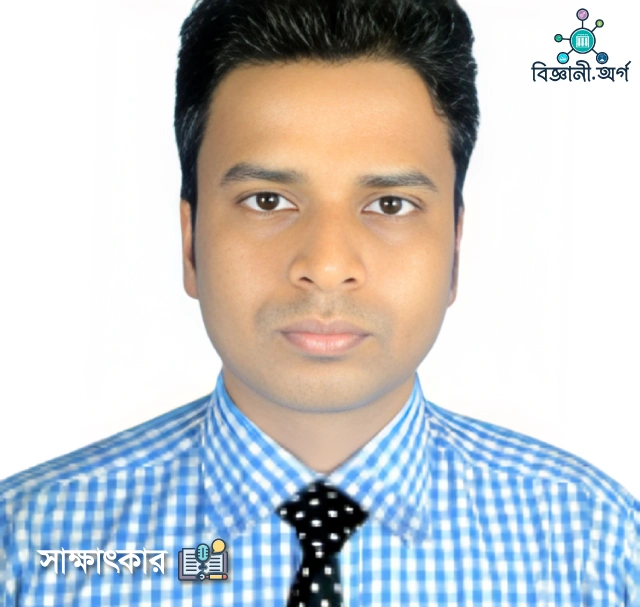
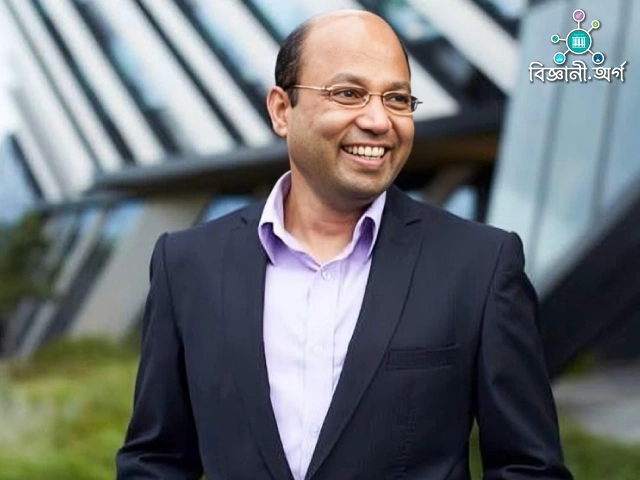
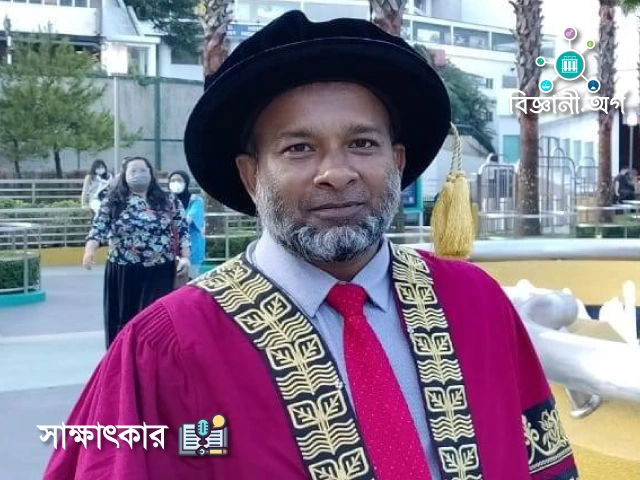
Leave a comment